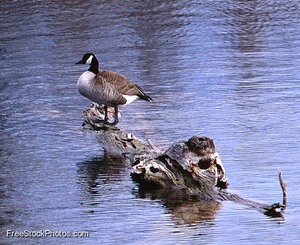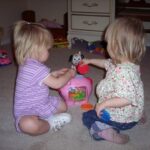If you delve deeply enough into stories by the Brothers Grimm, you will discover that a majority of their stories are about violence and horrible ways of getting murdered. Yet these stories are read to our children as “kid” stories, sometimes right before bed as bedtime stories. Many things that we deep to be childish have histories that are nothing short of horrifying or simply surprising.
Nursery rhymes are no exception. Some of the very first rhymes that kids learn are really about events in history, usually satirizing the royal and political realities of the period. For some reason, the messages behind nursery rhymes have all but become obsolete, and today these rhymes are sometimes called nonsense rhymes. So what is the real message behind well-known nursery rhymes? This article aims to shed some light on that.
Mother Goose – We begin with the name associated with nursery rhymes. There is some dispute regarding where the name originated. Some believe that it is a reference to Queen Goosefoot, the mother of Charlemagne, who was also a patron of children. She is thought to be the one referred to in the collection of short stories by Charles Perrault entitled “Tales of Mother Goose” in 1697. An alternate theory suggests that the true origin of mother goose was actually “Mother Goose’s Melodies” by Thomas Fleet in 1719, whose mother-in-law’s name was Elizabeth Vergoose. Wherever the true origin lays, Mother Goose has become synonymous with nursery rhymes.
Rock a Bye Baby – If you’ve ever listened to the words of ‘Rock a Bye Baby’ closely, you might have become alarmed at the message it seemed to be sending. Why would mothers put a child to sleep with the threat of falling out of a tree? In fact, the words to this rhyme (and lullaby) describe a Native American practice of placing a baby in the branches of a tree, and allowing it to be lulled to sleep by the rocking of the branches in the wind.
Humpty Dumpty – Although the words Humpty Dumpty were often used to describe somebody obese in the 15th century, this nursery rhyme actually refers to a cannon. The huge cannon was used by the Royalists during the English Civil War (1642-1649) in the siege of Colchester. It was placed on top of the wall that served to protect the city of Colchester from invading forces (called Roundheads). However, a shot from the opposing side succeeded in throwing Humpty of the wall. The Royalists attempted to raise the cannon to another part of the wall, but because it was so heavy, “all the kings horses and all the kings men” couldn’t do it. The city of Colchester soon fell to the Roundheads.
Little Miss Muffet – Little Miss Muffet was actually a little girl named Patience Muffet. Her step-father (1553-1604) was a famous entomologist who wrote the first scientific catalogue listing British insects.
Pop Goes the Weasel – A group of people in London developed a slang way of speaking called Cockney Rhyming slang. This slang was developed due to their dislike of the police and strangers, and was intended to be difficult for any outsiders to understand. The language was based on pairs of words and rhymes (“apples and pears” meant “stairs”), and were so hard to understand because the second word would usually be dropped (“apples”). In “Pop Goes the Weasel,” Weasel is derived from “weasel and stoat,” meaning coat. To pop was slang for to pawn. It was once traditional for everybody to own a good suit, even the poor, but people often ended up wearing their suits on Sundays, pawning them on Monday, then buying them back. Hence the term “Pop goes the weasel,” referring to the pawning of suits to get enough money to live through the week.
There Was an Old Woman (who lived in a shoe) – This rhyme might be referring to Queen Caroline – wife of King George II – who had eight children. However, it might also refer to King George himself! He began the fashion for men of wearing white powdered wigs, and therefore called an old woman. The children could mean the Parliament and the bed was the House of Parliament. Whips are still used in the House – that is, people (titled Whips) who make sure that everyone in the House is following rules and no one is out of line.
Jack and Jill – Jack is said to refer to King Louis XVI, who was beheaded in 1793 (“lost his crown”). Jill is his Queen, Marie Antoinette, who “came tumbling after.”




